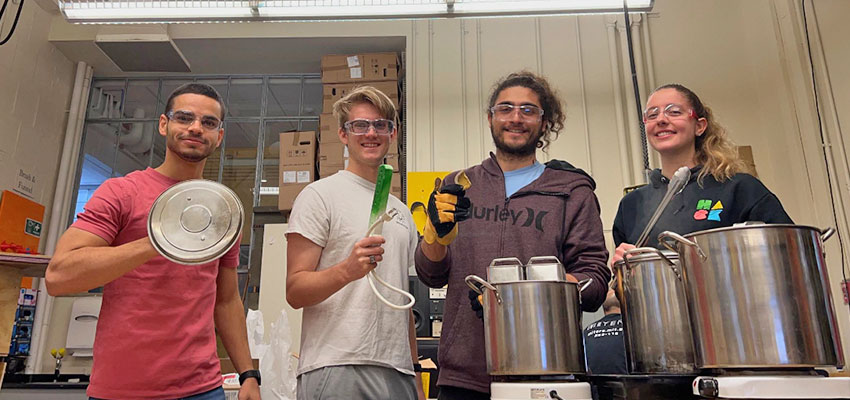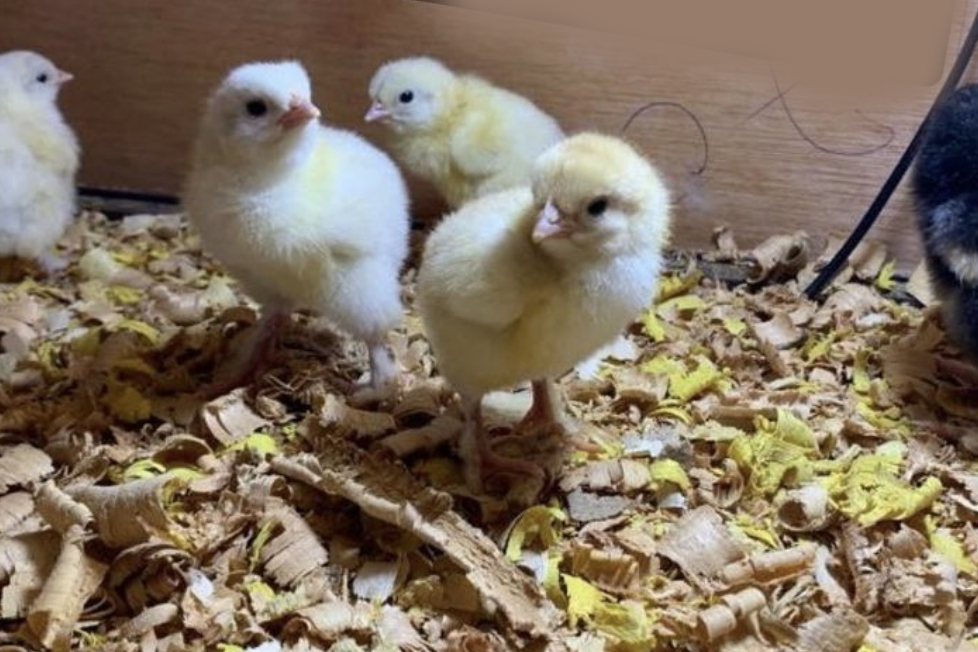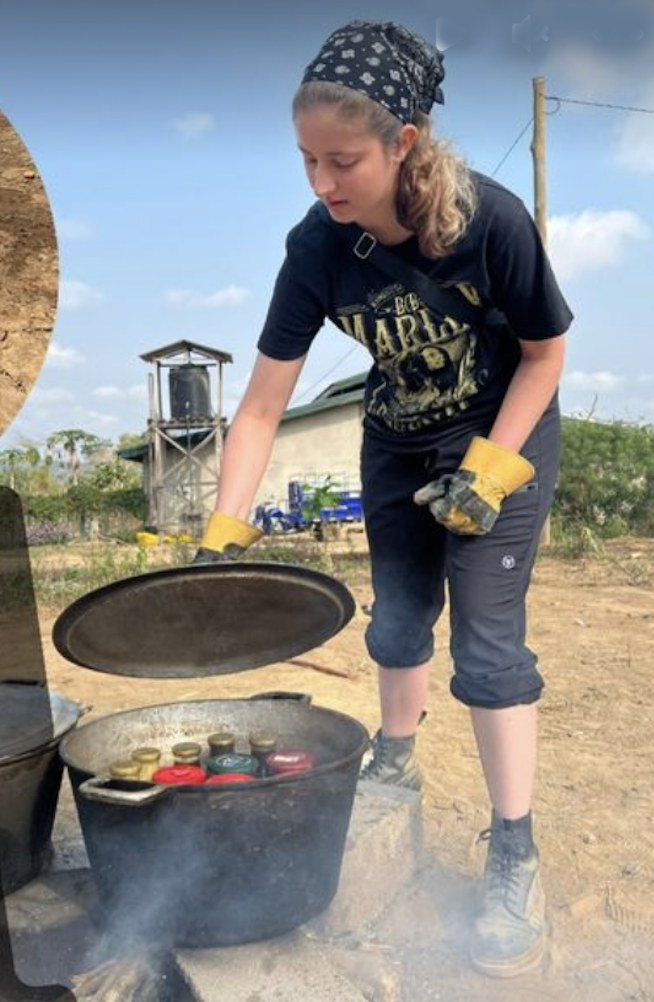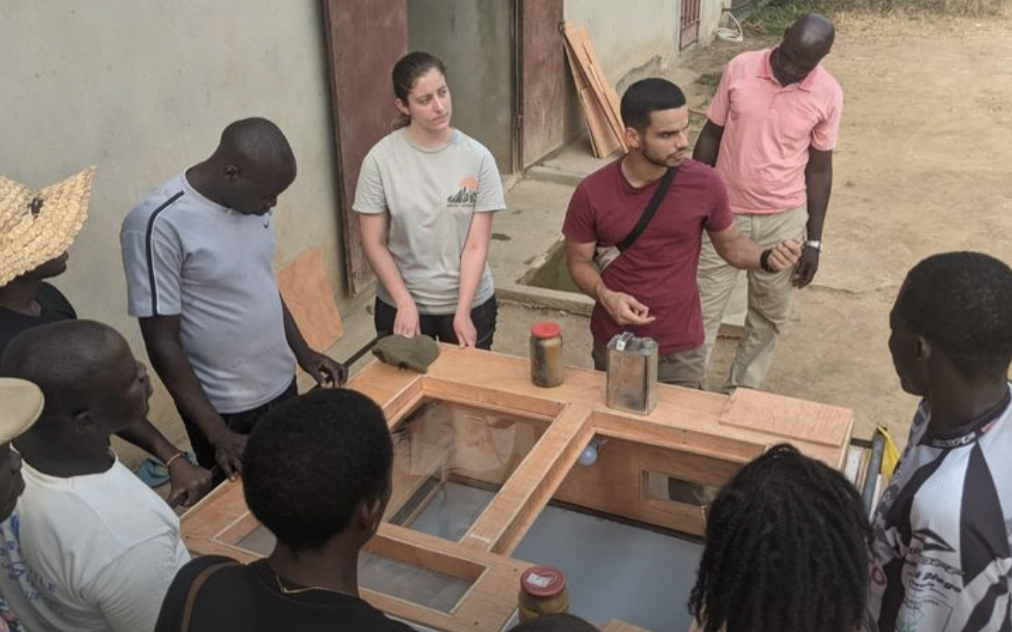News MIT team working on a J-WAFS Animal Agriculture grant travels to Africa
J-WAFS researchers help poultry farmers in Cameroon.
Carolyn Blais, J-WAFS February 6, 2023

Department of Mechanical Engineering students (L to R) Aly Kombargi, Will Reinkensmeyer, Ahmad Zakka, and Katana Finlason, in the lab with devices used to make their "thermal batteries" to warm the chicken brooder.
Eric Verploegen and Daniel Sweeney, two researchers in MIT’s D-Lab, are working on a way to boost livelihoods for poultry farmers in developing countries, particularly in Cameroon. The duo received a 2022 J-WAFS Grant for Transforming Animal Agriculture Systems for their idea to improve chicken brooders.

Three-day old chicks inside a prototype brooder

Katana Finlason boils beeswax in jars in a large cast iron pot to make "thermal batteries"
Newly hatched chicks cannot control their body temperature in the first few weeks of life, so a brooder—or a heated enclosure—is used to keep chicks warm. Rural farmers typically use firewood, charcoal, or kerosene to supply heat to the brooder. However, the emissions from open burning in the brooder and high temperatures increase mortality rates in chicks. Plus, constant supervision is needed from the farmer to keep watch over the fire.
Verploegen and Sweeney are working with MIT students and local community organizations in Cameroon, including African Solar Generation, to build a better off-grid brooder that uses materials that act as thermal batteries. The student team is made up of four students from the Department of Mechanical Engineering: Katana Finlason, Aly Kombargi, Will Reinkensmeyer, and Ahmad Zakka. The students’ work was the culmination of a full semester project in the D-Lab class Applications of Energy in Global Energy.

D-Lab researcher Daniel Sweeney (L) and MIT student Will Reinkensmeyer (R) move a piece of plywood to make a prototype brooder
During Independent Activities Period (IAP) this past January, the group traveled to Cameroon to test their homemade “thermal batteries,” which they made out of old mayo jars and paint cans filled with beeswax. On the MIT Mechanical Engineering Instagram page, the students noted that the beeswax is cheap, environmentally friendly, non-toxic, and locally sourced. Melted beeswax releases heat as it solidifies, so the latent heat in the wax is a great way to steadily warm the brooder box. The students built the box in Cameroon using locally sourced materials, though a prototype was first designed and built back in the lab at MIT.
The students gave a presentation about their project in French to local famers and also demonstrated the brooder with live chicks. Perhaps most importantly, the team gathered feedback from the farmers to further improve their design, and will continue working on the project with additional testing on Massachusetts’ poultry farms.

MIT student Aly Kombargi presents the brooder project to local farmers and community members in Cameroon
Learn more about the team's trip to Cameroon by watching this video by African Solar Generation.
